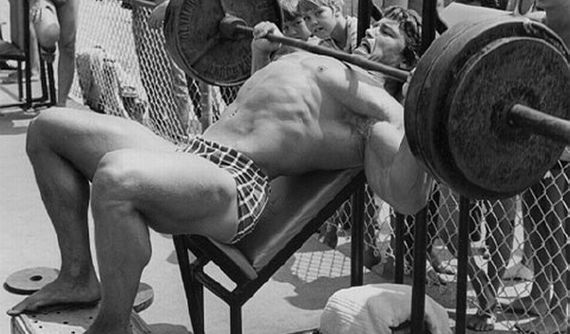Pump Iron, Prevent Diabetes


By Dr. Spencer Nadolsky
Pump iron now and save your foot from getting cut off later. Okay so maybe that is a bit dramatic but I want to quickly get the point across that lifting weights could stop you from getting diabetes later in life (1). In fact, weightlifting might be the most powerful medicine you ever take!
Diabetes and prediabetes are becoming more prevalent in the US, which poses a big time threat to our health care economy and of course our friends and family. (2) The need for prevention is key and pumping iron might be a big part of the answer! Let me explain.
 While you are pumping up your pecs with a bench press and swelling up your legs with a back squat, you are also producing more of the primary site for glucose disposal - MUSCLE! You might be thinking, “Duh I lift weights to get big muscles.” But do you understand that those big muscles will likely prevent you from getting diabetes and its subsequent complications?
While you are pumping up your pecs with a bench press and swelling up your legs with a back squat, you are also producing more of the primary site for glucose disposal - MUSCLE! You might be thinking, “Duh I lift weights to get big muscles.” But do you understand that those big muscles will likely prevent you from getting diabetes and its subsequent complications?
This is especially important as we age since we lose anywhere from 3-5% of our muscle every decade after age 30.(3) So it is essential that you build up a lot of muscle when younger and then continue lifting weights to hold on to that hard earned muscle later in life. This way you’ll have more glucose disposing tissue and ward off the onset of diabetes and prediabetes.
While pumping iron is great at creating that good looking, glucose disposing muscle, it also primes your muscles for better insulin signalling. (4). In other words, not only will you have a larger storage unit (muscle) to put glucose, you will also be more efficient at storing it (increased insulin sensitivity)!
To better illustrate this, think of insulin as the key, insulin receptor as the ignition, glucose transporters (GLUT4) as the sugar trucks, and muscle as the storage units. The sugar trucks sit inside the storage units waiting to come out and take the sugar inside to burn as fuel or store for later. When you eat some form of carbohydrate that eventually breaks down into sugar and gets into your bloodstream, your pancreas sends out insulin (the key) which then goes to the insulin receptors (ignitions) of your muscle and other tissues (storage units). This turns on the sugar trucks (GLUT4), which then come out and grab the sugar.
 So when you lift weights and get bigger muscles, you not only have bigger storage units, you also have better sugar trucks! Those with diabetes and prediabetes (insulin resistance) have poorly functioning sugar trucks and in the later stages of the disease they have less keys (less insulin from a burned out pancreas).
So when you lift weights and get bigger muscles, you not only have bigger storage units, you also have better sugar trucks! Those with diabetes and prediabetes (insulin resistance) have poorly functioning sugar trucks and in the later stages of the disease they have less keys (less insulin from a burned out pancreas).
To top this off, after a single bout of weight lifting, your sugar trucks don’t even need keys (insulin) to come out (5). They basically get hotwired and are able to grab sugar for storage without the need of their keys (insulin)! To learn more about this sugar truck analogy checkout my brother’s article “War on Diabetes” where he goes into more detail. If you really want to get into the details of insulin, head over to my friend James Krieger’s site and read his whole series on insulin.
So hopefully you learned that building big slabs of muscle is more than just looking amazing at the beach, although that is very important as well. Stay tuned for more health benefits of pumping iron - it is MY medicine of choice!
References
1.Eric B. Rimm. A Prospective Study of Weight Training and Risk of Type 2 Diabetes Mellitus in MenWeight Training and Risk of Type 2 Diabetes. Archives of Internal Medicine, 2012
2. J. P. Boyle et al., “Projection of the year 2050 burden of diabetes in the US adult population: dynamic modeling of incidence, mortality, and prediabetes prevalence,” Population Health Metrics, vol. 8, no. 1, p. 29, 2010.
3. Nair, K.S. 1995. “Muscle Protein Turnover: Methodological Issues and the Effect of Aging.” The Journals of Gerontology 50A:107-114.
4. M. K. Holten, M. Zacho, M. Gaster, C. Juel, J. F. P. Woj- taszewski, and F. Dela, “Strength training increases insulin- mediated glucose uptake, GLUT4 content, and insulin sig- naling in skeletal muscle in patients with type 2 diabetes,” Diabetes, vol. 53, no. 2, pp. 294–305, 2004.
5. Wasserman DH, Mohr T, Kelly P, Lacy DB, Bracy D (1992) Impact of insulin deficiency on glucose fluxes and muscle glucose metabolism during exercise. Diabetes 41: 1229-1238.
ABOUT THE AUTHOR

Dr. Spencer Nadolsky is an osteopathic physician who specializes in weight loss (bariatric medicine) and cholesterol (lipidology). While earning a BA in exercise science In undergrad he wrestled heavyweight for the UNC Tar Heels and was ranked as high as 3rd in the nation at one point while also garnering Academic All-American status. You can checkout his blog at www.GetLeanRx.com and his company at www.LeanerLiving.com or connect with him on facebook at https://www.facebook.com/DrSpencerNadolsky and https://www.facebook.com/leanerliving
Website: http://www.GetLeanRx.com
Facebook: http://www.facebook.com/leanerliving
Twitter: https://twitter.com/LeanerLiving
